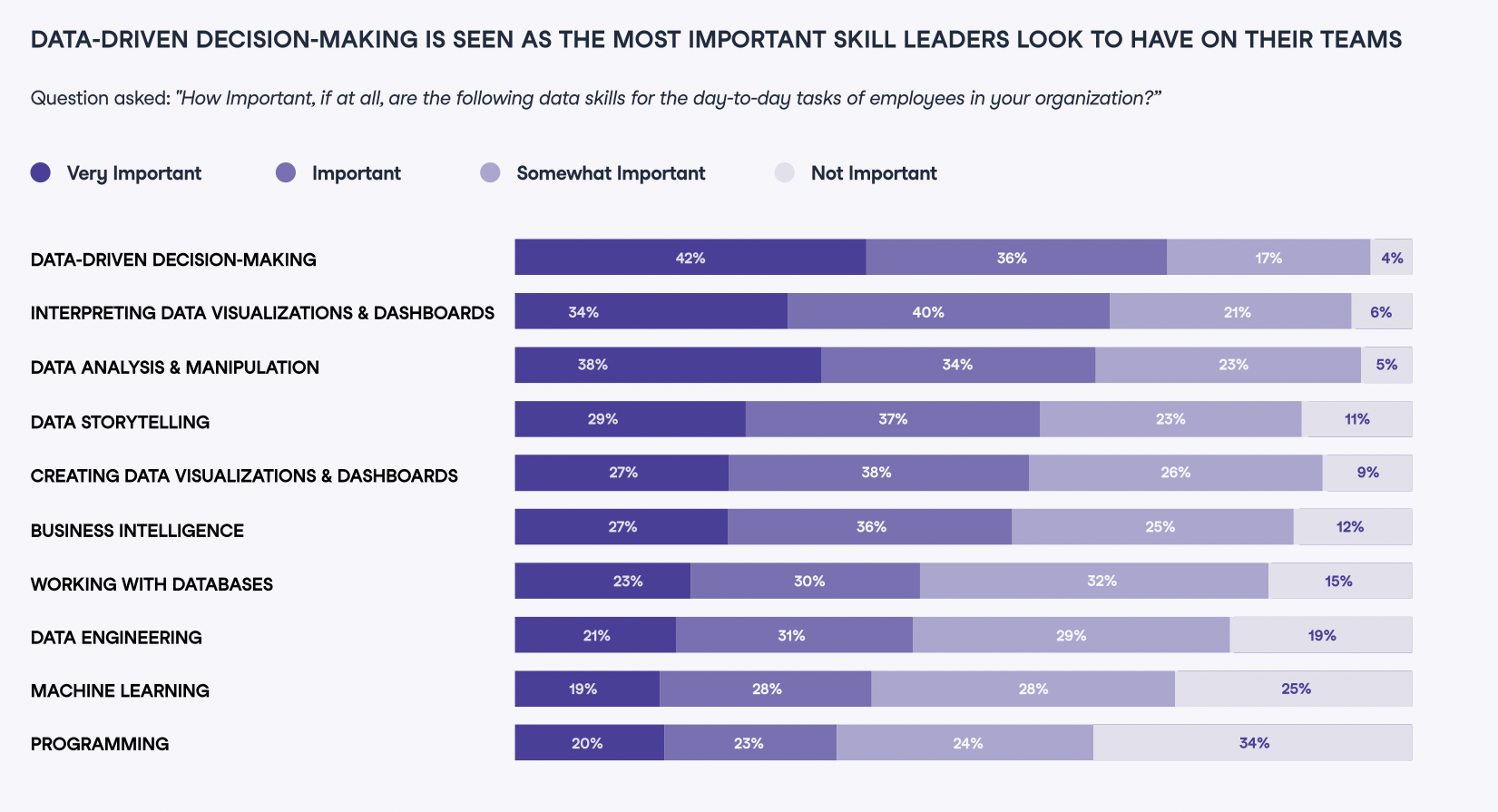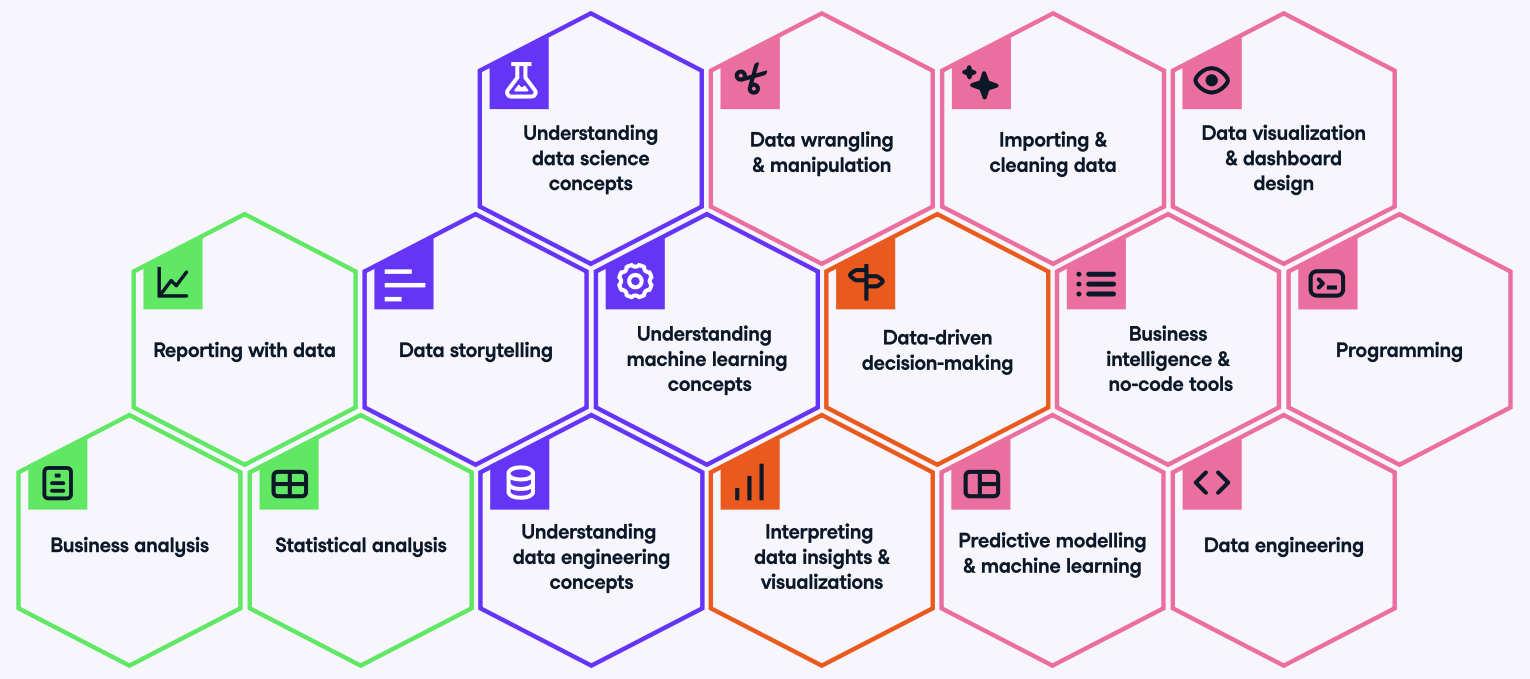What is Data Culture? A Comprehensive Guide to Being A More Data-Driven Organization
Training 2 or more people? Check out our Business solutions
Get your team access to the full DataCamp library, with centralized reporting, assignments, projects and more
Download the State of Data & AI Literacy Report 2024
Uncover what 550+ leaders in the US & UK believe about the state of their teams’ data & AI skills.
Data culture is not just an option, it is mission critical.
Sudaman Thoppan Mohanchandralal, Founder of NautilusPrinciple, and Former Chief Data Officer at Allianz Benelux
Everyone should become data literate. Everyone should teach kids how to be data literate and ask important questions about the data and the world around them.
Anjali Samani, Director of Data Science & Decision Intelligence at Salesforce
Ideally, the Chief Data Officer should own the data literacy agenda, but that is also largely dependent on where CDO sits within the broader organization. The Chief Learning or People Officer is also integral, as they help assess the organization’s current skill set and can contextualize data literacy within the overall future of work conversation.
Cindi Howson, Chief Data Strategy Officer at ThoughtSpot
Data culture and skills are a big part of a successful data strategy. Ultimately, what leaders need to understand is whether everybody in the company sees data as an asset and, if so, how do they see it? For example, somebody who’s worked on the shop floor all their life may not know how data can deliver value for them. So I think the upskilling and data literacy program is definitely something that you want to do early as part of your data strategy, to be able to deliver value down the line.
Vijay Yadav, Director of Quantitative Sciences & Head of Data Science at the Center for Mathematical Sciences at Merck
Training 2 or more people? Check out our Business solutions
Get your team access to the full DataCamp library, with centralized reporting, assignments, projects and more
blog
Why Data Culture Is a Key Component of Data Strategy
Joyce Chiu
5 min
blog
The Complete Guide to Data Literacy
Kurtis Pykes
14 min
blog
What is Data Literacy? A 2024 Guide for Data & Analytics Leaders
Matt Crabtree
21 min
blog
Case Study: How Data Modernization Initiatives Can Help Transform Your Company Culture
Joyce Chiu
4 min
blog
5 steps to building a learning culture in your organization
Kevin Babitz
6 min
blog
[Infographic] 5 Best Practices for Building a Data Academy
DataCamp Team
4 min

